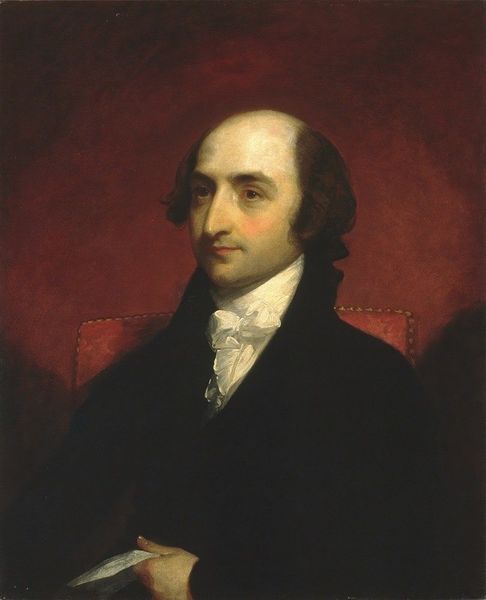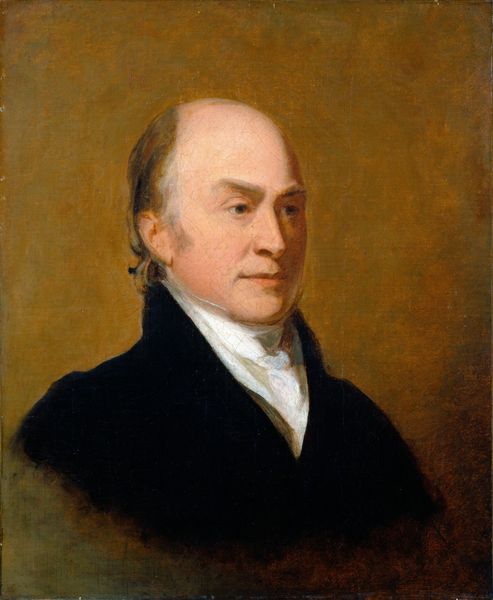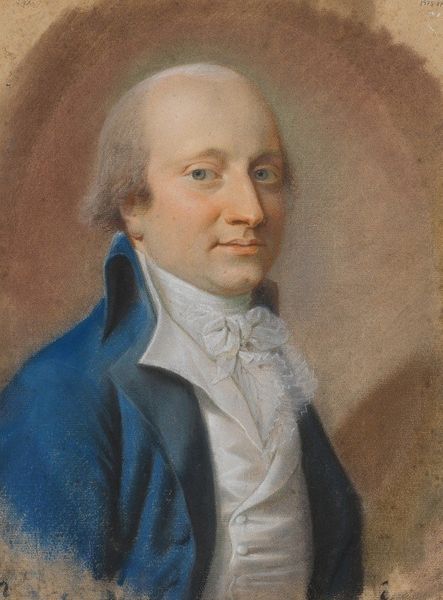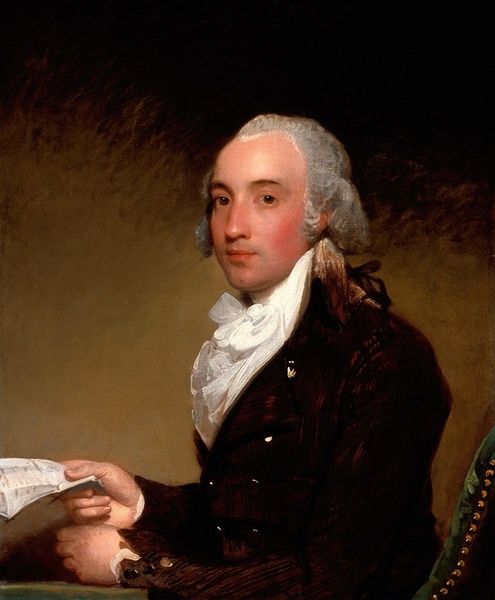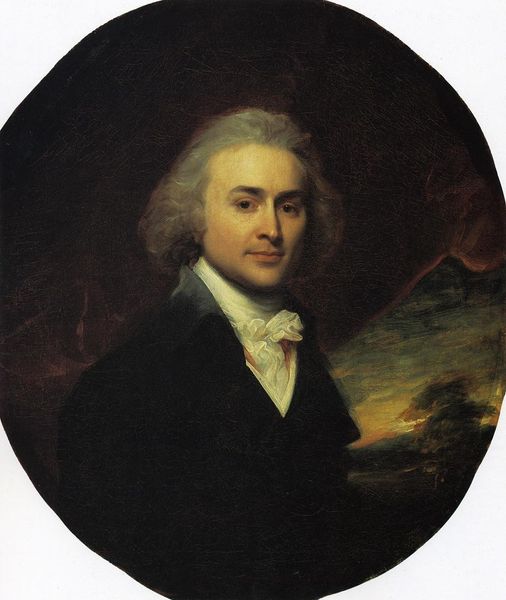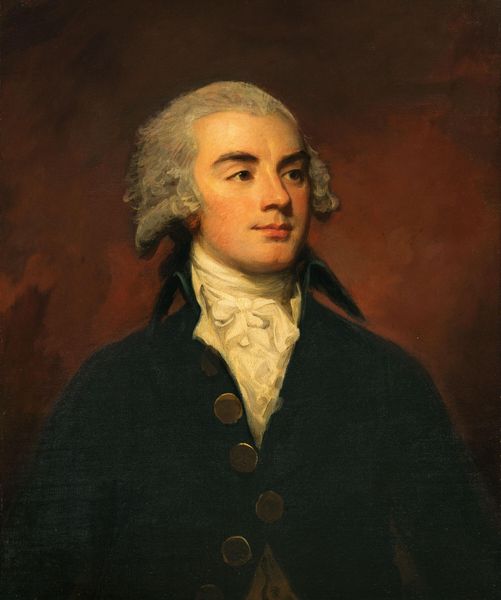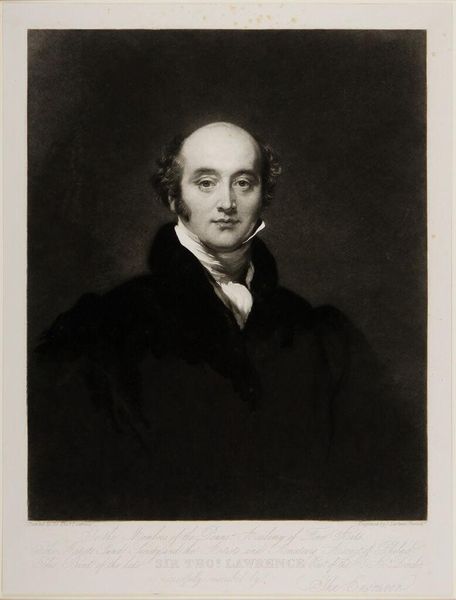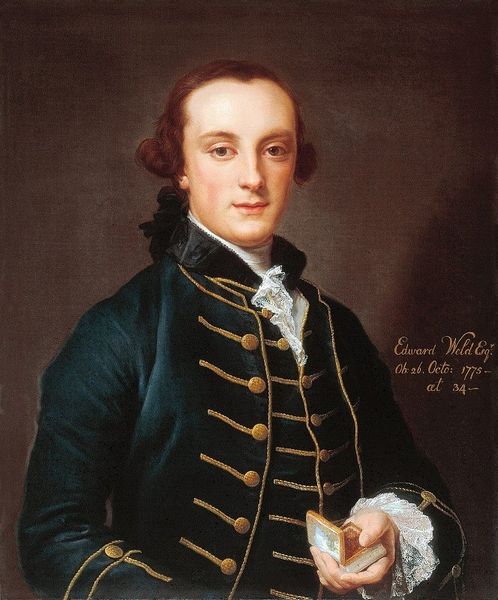
painting, oil-paint
#
portrait
#
neoclacissism
#
portrait
#
painting
#
oil-paint
#
history-painting
Copyright: Public domain
Curator: This is Rembrandt Peale's portrait of Albert Gallatin. It exemplifies Neoclassical portraiture. Editor: It's quite formal. The palette is muted, with the golden oval frame emphasizing the subject's serious demeanor. The artist uses a soft focus in the face contrasting with sharp black hair and dark coat. Curator: Absolutely. Gallatin was a significant figure, serving as Secretary of the Treasury under both Jefferson and Madison, shaping early American economic policy. Peale's rendering, although simple, is also about presenting Gallatin in a manner that aligns with the Republican ideals of the era. Think virtue, simplicity, and civic duty. Editor: I can see that. It has that stoic Roman vibe going on, down to the carefully arranged cravat. There's a lot of symbolism baked into this style of painting. That smooth, almost porcelain skin contrasts with the darker tones, highlighting Gallatin's face as the seat of intellect and reason. Curator: Indeed. This work showcases the power of portraiture in solidifying national identity and memory. These kinds of portraits circulated widely and contributed to a collective visual vocabulary around American leadership. How power was envisioned and thus reinforced is a fascinating aspect of examining such works. Editor: True. But, from a purely aesthetic standpoint, what I notice is how the shape of the oval subtly pushes my focus toward Gallatin's face, further adding to its impact. Rembrandt Peale understood the effects of formal decisions. He’s placed Gallatin just slightly off-center too, providing just enough dynamism so it's not a flat, static depiction. Curator: A powerful observation regarding artistic technique, I agree. When considering these paintings, we also have to consider the messages of the subject—who they wanted to appear to be. We must recall, also, that Rembrandt Peale belonged to the celebrated Peale family of artists and museum founders who shaped American cultural life. Editor: Right. By focusing on these aesthetic qualities, we’re gaining new layers of meaning within historical contexts, appreciating this era anew. Curator: Precisely. Viewing Peale's Gallatin allows us a portal into not just a life, but the ambitions of an emergent republic.
Comments
No comments
Be the first to comment and join the conversation on the ultimate creative platform.
